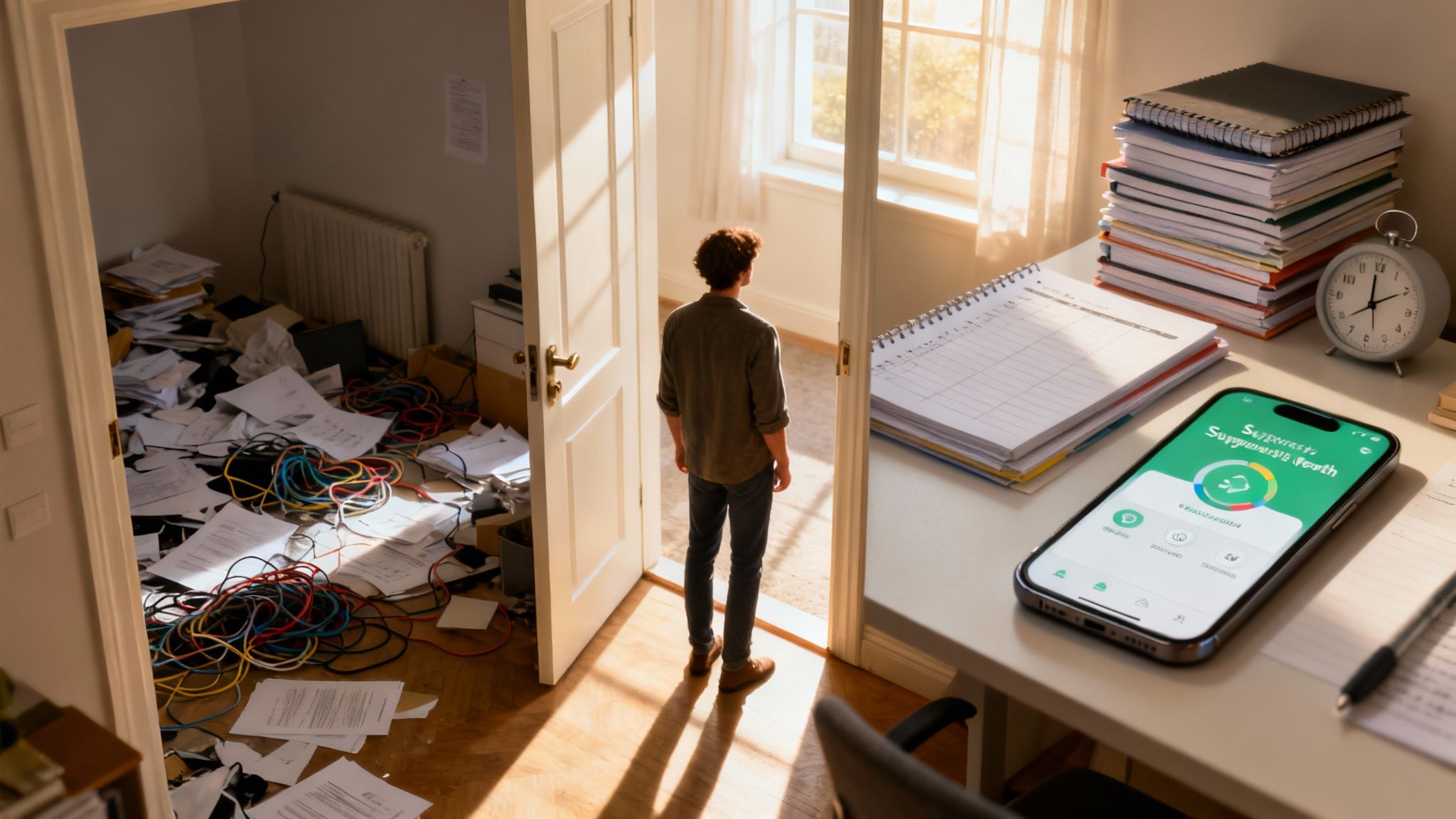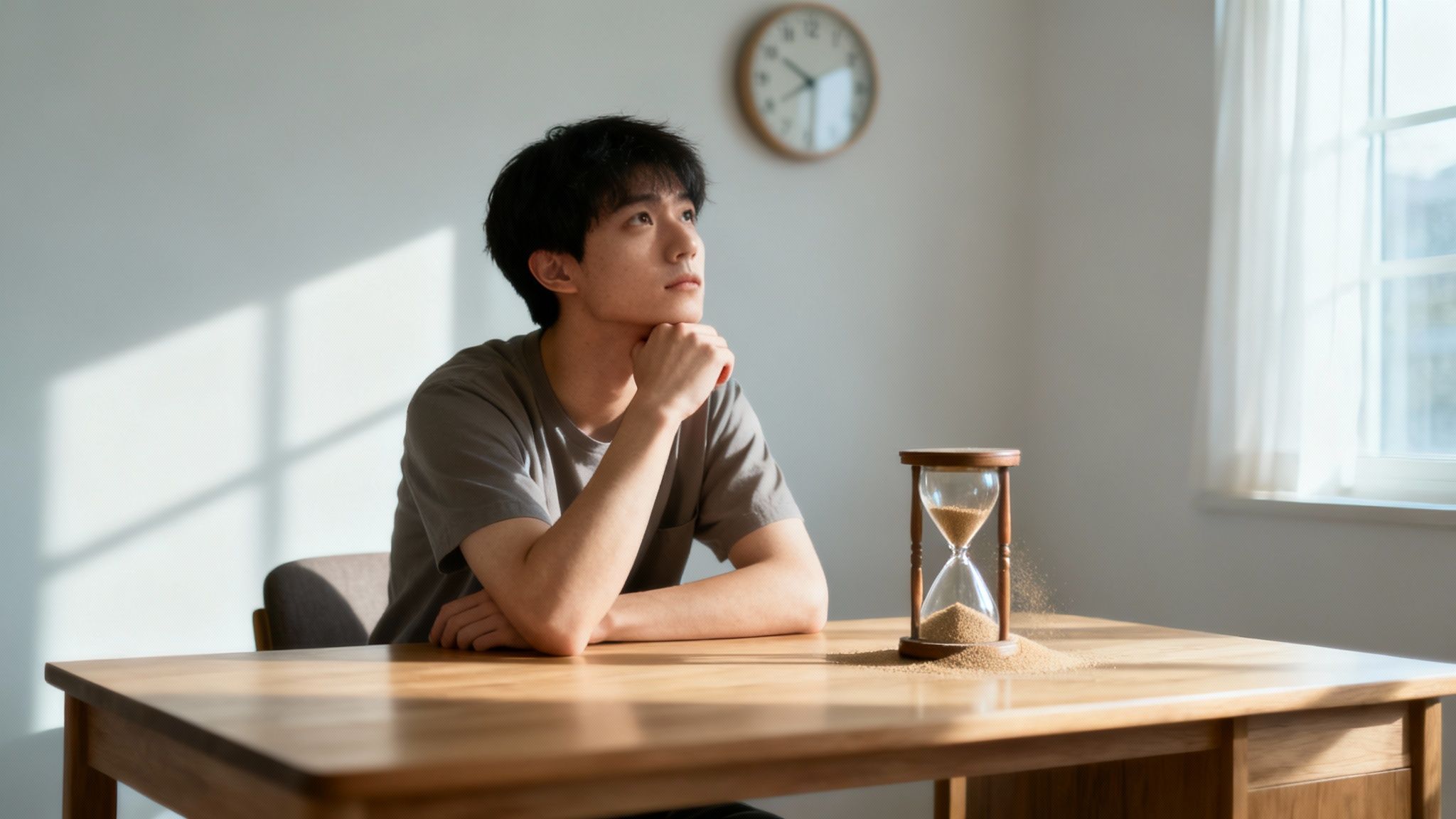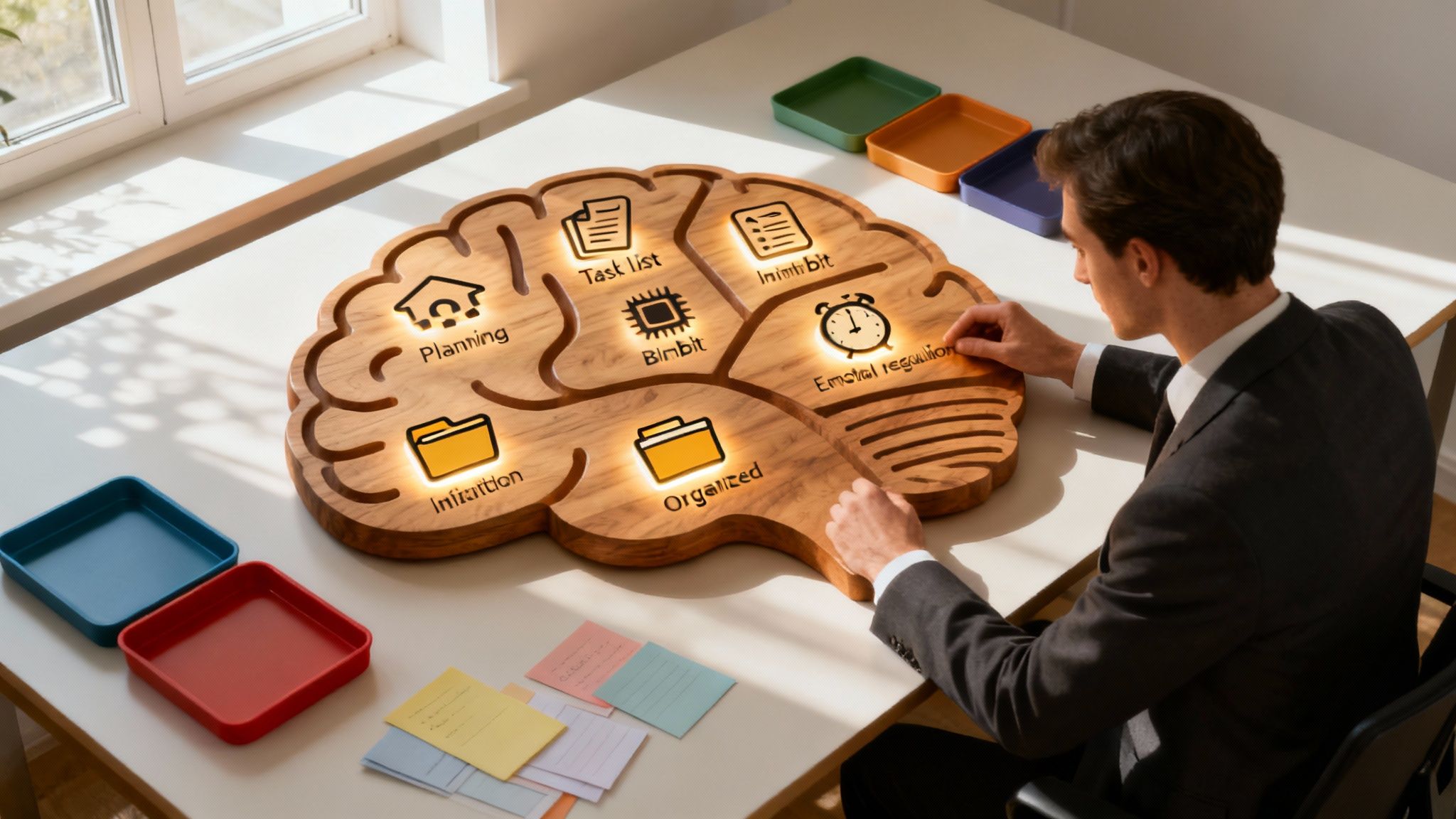Missing deadlines, losing your keys (again), untimely emotional outbursts, and feeling restless at night after feeling like a zombie all day.
Sound familiar?
Despite what society may have told you, there’s a good chance your frustrations aren’t your personal failing. It may actually be that you’re just an adult with undiagnosed ADHD, or attention-deficit/hyperactivity disorder. Let’s explore why so many ADHD cases go unnoticed and untreated.
Too long; didn’t read
- Adult ADHD can go untreated for a few reasons, including unique symptom presentation and masking.
- Undiagnosed ADHD can also be due to the fact that our society perpetuates a social stigma around mental health, as well as a lack of equal access to affordable healthcare.
- Just because you’re not diagnosed as you're reading this, doesn’t mean there’s no hope for you.
If you truly struggle with ADHD, you’re not alone and it’s not too late to receive a proper diagnosis. Make sure you research your options for doctors that can diagnose ADHD in adults, and try some of our strategies for getting unstuck while you wait for your evaluation!
🚀 Unlock your potential: don't let undiagnosed ADHD hold you back! Manage your ADHD with the only app that teaches, coaches, and fosters a community for ADHDers all in one place. Take our ADHD quiz to get started.
Why is ADHD often untreated in adulthood?
There are several reasons why ADHD may go undetected through adulthood:
- Mental health and ADHD stigma, which is especially common in Asian and Asian-American cultures
- Inaccessible diagnosis and unaffordable treatment
- ADHD masking
- Other conditions (comorbidities) that mask ADHD symptoms
- Previous misdiagnoses
Masking
There are two types of masking that we can refer to: the kind used as a defense mechanism to “fit in” with neurotypicals, and the kind caused by other conditions hiding ADHD symptoms.
Both of these are discussed later in the article!
The cons of undiagnosed ADHD

Untreated ADHD can cause challenges, from impulsive decision-making to difficulty focusing, both of which can seriously impact jobs, academics, and relationships.
You may also feel frustration with yourself, or even feel like a failure, but - Plot twist! - you’re not a failure; the system is the failure for allowing your ADHD to go undetected for so long.
If this is the case for you, you may relate to the list below.
Subtle signs of undiagnosed ADHD in adulthood:
- Low self-esteem
- Depression
- Anxiety
- Relationship problems
- Job instability
- Irritability
- Drug or alcohol abuse
What does ADHD look like in undiagnosed adults?
It’s important to remember that not everyone with ADHD shows all of the symptoms. While many people with ADHD are forgetful or struggle in school, ADHDers are also more than capable of getting good grades or having a great memory.
ADHD affects everyone differently, but here are the most common symptoms that affect ADHD adults—especially if they’ve been undiagnosed their entire lives.
1. You frequently feel restless — like you need to do something!
Restlessness (or hyperactivity) is the feeling that you can’t relax, often presenting as anxiety or physical tension. Sometimes this also manifests as talking excessively or interrupting others.
2. Your entire life is literally a mess.
Disorganization is your middle name! Do you struggle with…
- Clutter in your home or in your car?
- Frequently misplacing things?
- Using unorganized storage methods or piles that make absolutely no sense—not even to you?
3. It’s really hard for you to get motivated.
The ability to plan, organize, and begin an activity are all classified as executive functions. Executive function failure (also called couch lock, task freeze, task paralysis, ADHD paralysis, or executive dysfunction) can hit you at anytime — even if it’s something you usually enjoy doing.
4. Paying attention - to anything - is not your strong suit.
Any task that you deem as annoying, time-consuming, or dull will almost always be put off until the absolute last second. (Feeling called out yet?)
Inattention can also come off as making ‘careless mistakes’ at work, or being easily distracted by external stimuli (things in your environment) or even internal stimuli (your random thoughts, which you probably have lots of.)
5. “I forgot!” is something you say on the daily.
Forgetfulness can mean missing significant dates, where you put your keys, or even forgetting the entire point of the story you’re telling someone, while you’re in the middle of telling it.
6. You’re a bit… emotional…
Emotional dysregulation is common for people with undiagnosed (and even diagnosed) ADHD. If you’ve ever felt like you can’t calm down, have unexplainable mood swings, or have sudden emotional outbursts… you may have been experiencing emotional dysregulation.
7. It’s really hard to make decisions, especially if you have too many options.
Feeling overwhelmed by too many choices—or a complete inability to make a decision—can be a symptom of untreated ADHD. Long-term, struggling with indecision can result in severe procrastination, or - on the other end of the spectrum - severe impulsivity.
Why is ADHD so hard to diagnose in adults?

1. Symptoms of co-occurring conditions hide ADHD.
It’s common for ADHDers to have comorbid mental health conditions—over 90% do! While ADHD doesn’t cause them, necessarily, but their presence can make it harder to detect ADHD.
Anxiety disorders
Anxiety is one of the most common comorbidity in adults with ADHD. This includes:
- Generalized anxiety disorder (GAD; anxiety)
- Social anxiety (social phobia)
- Obsessive-compulsive disorder (OCD)
- Post-traumatic stress disorder (PTSD)
All of these, and more, have the potential to hide ADHD symptoms.
Mood disorders
Conditions affecting mood regulation, like depression, premenstrual dysphoric disorder (PMDD), and bipolar disorder, are common in ADHDers. For example, impulsive behaviors due to bipolar disorder can mask ADHD and vice versa.
Other psychiatric conditions
Other mental health conditions—personality disorders, substance abuse disorder, intermittent explosive disorder, oppositional defiant disorder—are also common in people with ADHD.
2. You've been masking your ADHD symptoms
Trying to hide ADHD symptoms for fear of being judged is called “masking.''
If you find yourself watching other people closely in social situations, and trying to mirror them to make sure you’re ‘doing the right thing’, you may be a professional masker.
3. Stigma
There is still a huge stigma surrounding ADHD in society, mainly due to myths and misconceptions.
Between the moral panic of “overmedicating kids” and even calling necessary medicines, “legalized meth,” getting the help we need feels like it comes shame and judgment. Overcoming the stigma surrounding ADHD is a big step in getting help.
Luckily, your medical diagnoses and medications only need to be between you and your doctor.
4. Poor access to treatment
Lack of affordable access to medical treatment is an issue for many people with mental health difficulties all around the globe. Of course it's not their fault, but it can snowball into even worse circumstances.
Here is an extreme example:
If someone loses their job due to untreated ADHD symptoms, they can also lose their medical insurance and access to medication, putting them in an even worse position.
Treatment for ADHD in adulthood
Medications
When prescribed by a doctor, stimulant and non-stimulant medications are helpful in the management of ADHD. Some antidepressants, like bupropion, can also help.1
Psychotherapy
Therapies like cognitive behavioral therapy (CBT) won’t cure your ADHD, but it can help you better understand how your brain works. Knowing which behaviors are caused by ADHD can ease feelings of failure and create more productive thought patterns habits.
Self-help strategies
Outside of medication and therapy, self-help strategies may help you manage ADHD:
- Create an ADHD-friendly morning routine to stay on schedule.
- Use lists to keep track of what you need to accomplish each day. Sometimes a brain dump—writing down your thoughts—can be helpful to recognize what’s important.
- Break up large tasks into chunks (“chunking”) so they’re less intimidating.
- Stay on task by having a dedicated, clutter-free work zone.
- Play white or brown noise in the background to drown out distractions.
- Try body-doubling with another person to help stay on task. If you’re alone, try video chatting, setting up a mirror, or joining a co-working session on the Inflow app.
Getting a diagnosis
There is still a lot of stigma surrounding ADHD and getting treatment for it, and you may be hesitant to talk to a doctor… but a diagnosis can be life-changing!
Just because you aren’t diagnosed right now, doesn’t mean you don’t have ADHD. (Read that again.)
It’s not too late to start medication, therapy, or other ADHD management methods. Talk to your doctor about your symptoms and how they affect your daily life, so you can start living the life you want.








